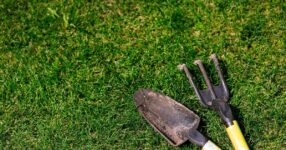
Two household ingredients can help revive your lawn and get it in best shape for 2025
Leonardo and Domenico, gardening pros from Airtasker, recommended checking soil pH when it comes to lawn maintenance.
They said: “Not many people realise this is such a key step, but we always recommend testing soil pH and making any adjustments to ensure it’s within the ideal range for grass growth.
“Grass requires nutrients like nitrogen, phosphorus and potassium to grow well.”
Testing your lawn soil’s pH at home couldn’t be easier, and it can be done with two household ingredients.
Split some soil between two containers and start by dampening it with water.
Add baking soda to one sample and white vinegar to the other.
If the soil bubbles after adding baking soda, this means the soil is acidic, and if it bubbles after adding white vinegar, it’s alkaline.
Testing the soil can help to get your lawn in its best shape and make it thrive heading into 2025.
Acidic soil can encourage the growth of moss and weeds which can be both unsightly and damaging to the lawn.
To make your lawn more alkaline, you can apply lime granules to your soil, ideally three months before planting new grass, usually in autumn or in the winter.
Lime is a soil amendment made from ground limestone rock, which contains calcium carbonate and magnesium carbonate.
When added to the soil, the compounds work to increase the soil’s pH, making the soil less acidic and more alkaline.
Unfortunately, there is no quick way to boost the lawn’s pH and these methods may take a while to work.
However, acidic lawn isn’t the only problem, lawn which is too alkaline can also show signs of discolouration and bare spots on the lawn.
Most lawns thrive at a pH range between six and seven, near neutral so test the soil again after a while to see what level it is at.
Other ways to test the soil’s pH include purchasing a test kit online, a digital pH tester or testing strips.



